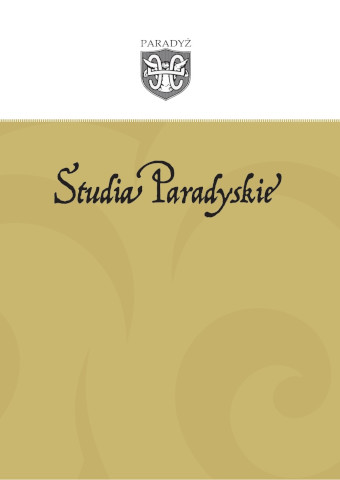Oktawa liturgiczna. Rys historyczny i obowiązujące unormowania
Liturgical Octave. Historical Outline and Applicable Regulations
Author(s): Kazimierz DullakSubject(s): Other Christian Denominations
Published by: Uniwersytet Adama Mickiewicza
Keywords: Octave of Passover (Easter); Octave of Christmas; liturgical regulations; liturgical calendar;
Summary/Abstract: Celebrating and participating in the liturgy is an expression of the faith of the people of God. The liturgy forms the community of the Church. The hierarchical Church seeks to make its experience as fruitful as possible for all the baptised who make up the priestly people of God. The established liturgical norms, including calendars, have changed over the centuries. Thus, the accents emphasising the importance of individual religious events in translating into liturgical celebrations changed. The established law was also influenced by the sense of faith of the people of tGod, it manifested itself in the customs and tradi- tions expressed in folk rituals. An example of the overlapping of the Church’s liturgical regulations and bottom-up initiatives rooted in popular piety is, among others, the tradition of the octave of the Solem- nity of the Most Holy Body and Blood of Christ (Corpus Christi) cultivated in Poland.The twentieth century is the time of liturgical reform activities undertaken by the Pastors of the Univer- sal Church. Many signs accumulated in the liturgy, which were not properly read by the participants of the services, were reduced. The principle of simplifying the liturgy and reducing the rituals to the level of legibility of its meaning was adopted.The liturgical octaves have a very strong message in them: strengthening in the intensity and duration of experiencing the content of the solemnities. It is often repeated that consecutive octave days are like celebrating the solemnity itself for the following eight days. While this claim can be implied for the Oc- tave of Passover (Easter), it is difficult to relate to the Octave of Christmas. Although currently only two octaves are left in the liturgical calendar, they differ in many respects. The question arises: is this a good solution for the faithful of the Catholic Church? Should we not return to other octaves, e.g. the Solemnity of Pentecost? Do the current tables of priority of liturgical days require redrafting? Many doubts arise, followed by questions concerning liturgical regulations.This study was aimed at showing the development and present shape of liturgical octaves. This project was done based on bringing closer the decisions of the popes and the bodies acting on their behalf (con- gregations) over the centuries. The final chord presents the current regulations and highlights the source of their formation.
Journal: Studia Paradyskie
- Issue Year: 2022
- Issue No: 32
- Page Range: 57-74
- Page Count: 18
- Language: Polish

